Mountains in Alaska are known for their stunning beauty, but some have also earned the distinction of being dangerous. The mountains’ uncharted terrains contribute to their allure.
Mountain climbing is not a pursuit for the timid. Although many adventurers have survived the dangers of these mountains, numerous individuals have succumbed to the unrelenting elements and rugged terrain of the mountains.
Here are the ten most dangerous mountains in Alaska.
10 Most Dangerous Mountains in Alaska
Mountaineering is a risky enterprise, yet it remains a pursuit that some are willing to undertake. Scaling these dangerous Alaskan peaks demands mountaineers confront the severe frostbites and altitudes.
Below are the ten most dangerous mountains in Alaska:
1. Mount Denali

At a towering height of 20,310 feet above sea level, Mount Denali stands out as one of the most secluded peaks on the planet.
©evenfh/Shutterstock.com
At a towering height of 20,310 feet above sea level, Mount Denali stands out as one of the most secluded peaks on the planet and holds the title of North America’s tallest mountain.
Scaling this challenging summit demands extensive preparation and courage, as adventurers must:
- Brave treacherous ice and wind
- Navigate across glaciers
- Encounter bears
- Manage altitude issues
- Contend with the ever-looming danger of avalanches.
Unfortunately, the number of fatalities among hikers at Mount Denali has now exceeded 100 and is still rising.
2. Byron Glacier, Portage Valley
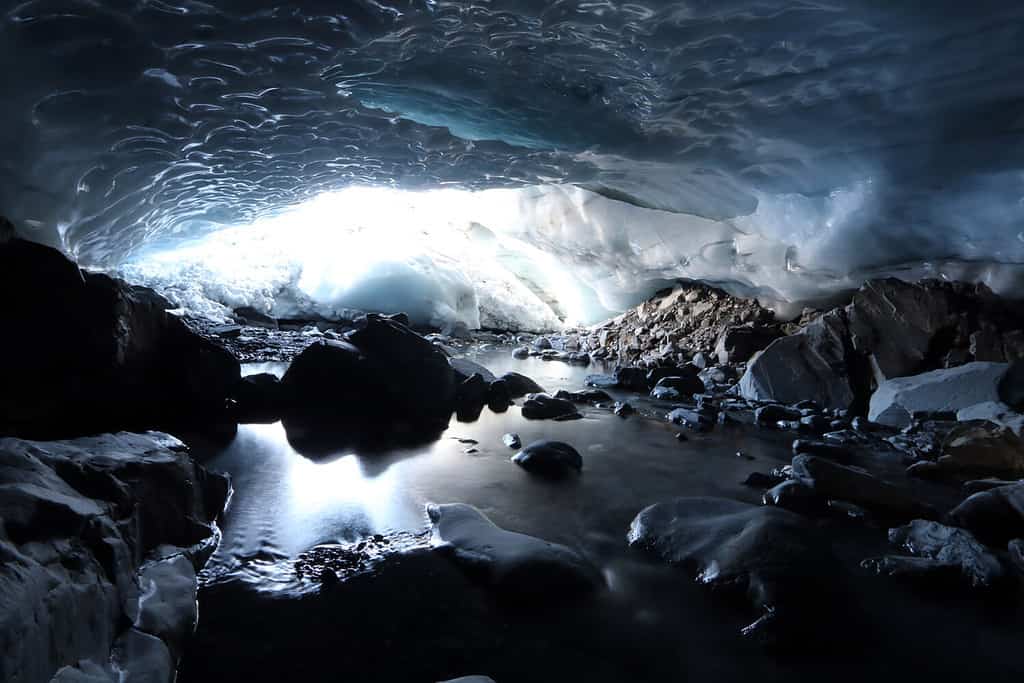
Hikers are drawn to Byron Glacier to capture its ice caves along the lower edges of the glacier.
©Ian William Hromada/Shutterstock.com
Hikers are drawn to Byron Glacier to capture its ice caves along the lower edges of the glacier with their cell phones.
Although the trails pose no significant danger, the natural hazard lies in the dangerous caves, which can collapse without warning, resulting in injury or death. The site’s popularity has led to one fatality and several injuries.
Moreover, visitors should be aware of the deadly avalanche risk during winter. Avalanches can occur from either or both sides of the valley. Therefore, they should exercise caution.
3. Amulet Peak

One of the most significant risks in Amulet Peak is the abundance of wildlife.
©3,418 × 2,147 pixels, file size: 2.33 MB, MIME type: image/jpeg – Original / License
Amulet Peak is a beautiful and famous mountain in the heart of Alaska. While it is a great place to enjoy nature, visitors should know the potential dangers.
One of the most significant risks in Amulet Peak is the abundance of wildlife. Bears, mountain lions, and other dangerous animals call the peak home and can pose severe threats to visitors. Following the park guidelines, such as carrying bear spray and staying on designated trails, is crucial.
Another potential hazard on this mountain is the uneven terrain. Visitors should wear appropriate footwear and care when walking in steep, rocky areas.
4. Turnagain Pass

The pass offers ample opportunities for skiing and snowmobiling.
©Samira Moradi/Shutterstock.com
Turnagain Pass attracts passionate wilderness enthusiasts who seek the best of Alaska’s natural beauty, from its stunning glaciers to its vibrant wildflowers. The area also offers ample opportunities for skiing and snowmobiling.
However, it can also be risky. Its vast expanse can easily disorient hikers, and the region’s unpredictable weather patterns can subject them to sudden and unrelenting snowstorms.
Additionally, cliffs and avalanches pose significant risks to those exploring the area.
5. Makushin Volcano
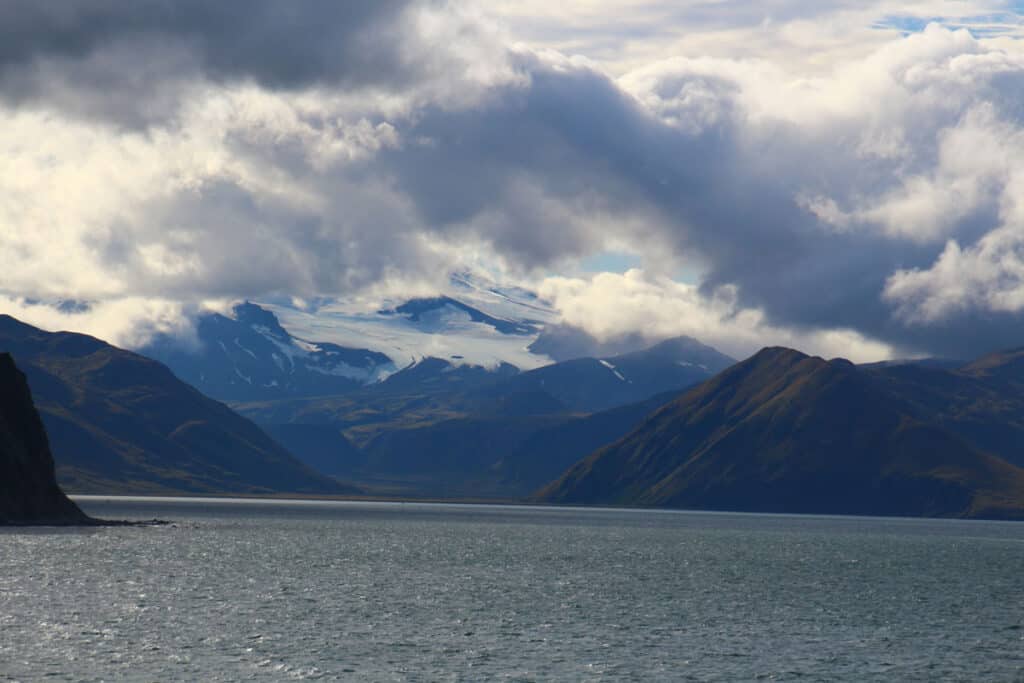
The most significant risk of Makushin Volcano is its potential for sudden eruptions.
©iStock.com/Vipersniper
Makushin Volcano is an active volcano located on Unalaska Island in Alaska. While it is a beautiful and awe-inspiring natural wonder, visitors should be aware of its potential dangers.
The most significant risk of Makushin Volcano is its potential for sudden eruptions. The volcano has erupted several times in the past, which has caused considerable damage to the surrounding areas.
Visitors should be aware of the current alert level for the volcano and heed any warnings or advisories issued by park authorities. Another potential danger associated with this volcano is the release of hazardous gases. Sulfur dioxide, carbon dioxide, and other toxic gases can be released during an eruption, posing health risks to those in the area.
The Steep and uneven terrain around the volcano can also be dangerous. Visitors should wear hiking gear and take care when walking on the rocky slopes.
6. Mendenhall Glacier Trail
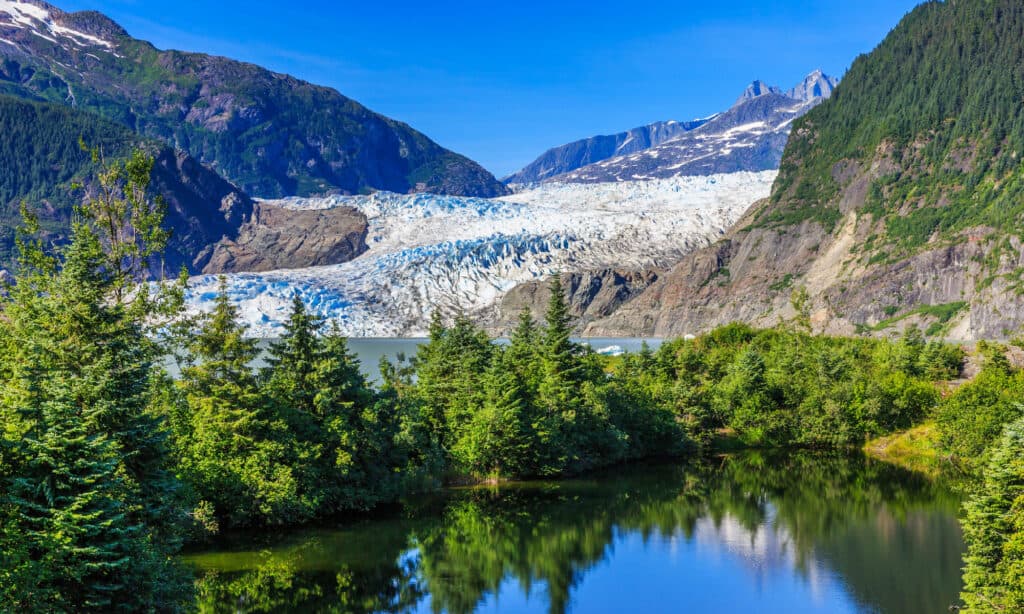
Inexperienced hikers should take the Mendenhall Glacier Trail adventure with others.
©iStock.com/SCStock
The Mendenhall Glacier trail presents a surreal landscape with enormous glacier formations and famous ice caves.
Inexperienced hikers should, however, take the Mendenhall Glacier Trail adventure with others. The path is challenging, and some areas lack proper markings, leading to potentially fatal cliffs requiring climbing equipment.
Losing one’s way or facing an abrupt fall resulting in severe injury or death is easy, so practicing caution is necessary. Additionally, hikers must be vigilant of bears while on the trail.
7. Mount Redoubt

One of the significant risks associated with Mount Redoubt is its sudden eruptions. The volcano has erupted several times, causing damage to the surrounding areas.
©melissamn/Shutterstock.com
Mount Redoubt is an active volcano located in the Chigmit Mountains of Alaska. While this mountain is a popular destination for outdoor sightseers, the hill has potential dangers.
One of the significant risks associated with Mount Redoubt is its sudden eruptions. The volcano has erupted several times, causing damage to the surrounding areas. The park authorities issue warnings and alerts regarding the current alert level of the volcano.
The weather in the area can also be unpredictable, so visitors should be prepared for sudden changes in temperature or visibility. It’s also advisable to wear appropriate hiking gear and take care when walking on steep slopes.
8. Flattop Mountain
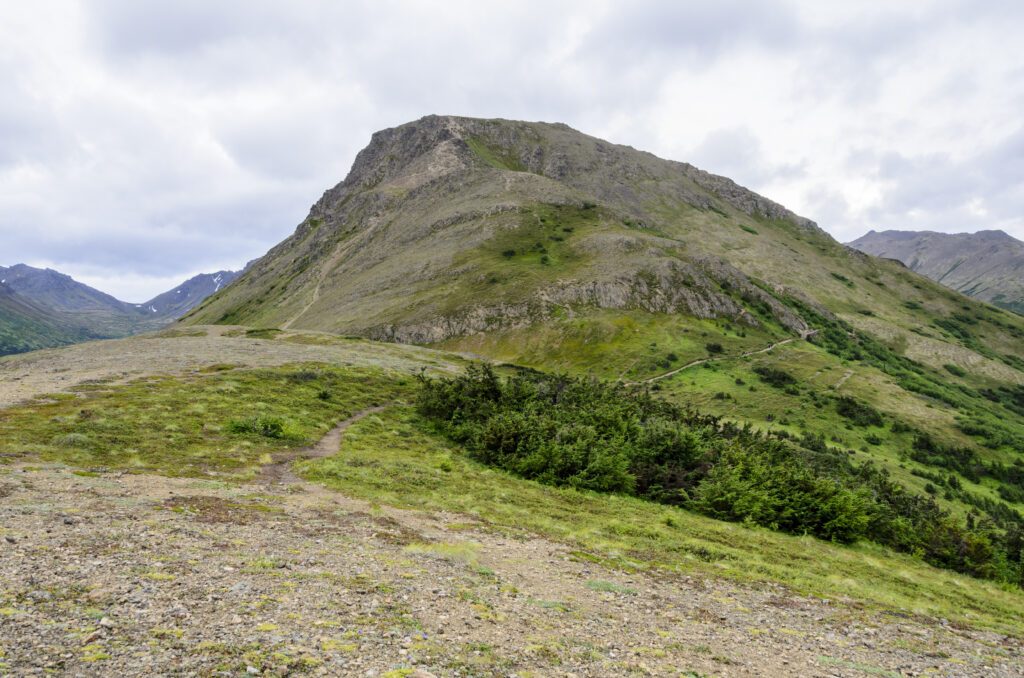
Those planning to visit in winter should exercise caution as this area has high avalanche risks, resulting in numerous deaths and injuries.
©Susan R. Serna/Shutterstock.com
During the stunning summer season, the Flattop Mountain trails attract many visitors. However, those planning to visit in winter should exercise caution as this area has high avalanche risks, resulting in numerous deaths and injuries.
Instances like the rescue of a hiker whose legs were spotted under the snow serve as a poignant reminder of the need to take the threat of avalanches seriously.
9. Crow Pass
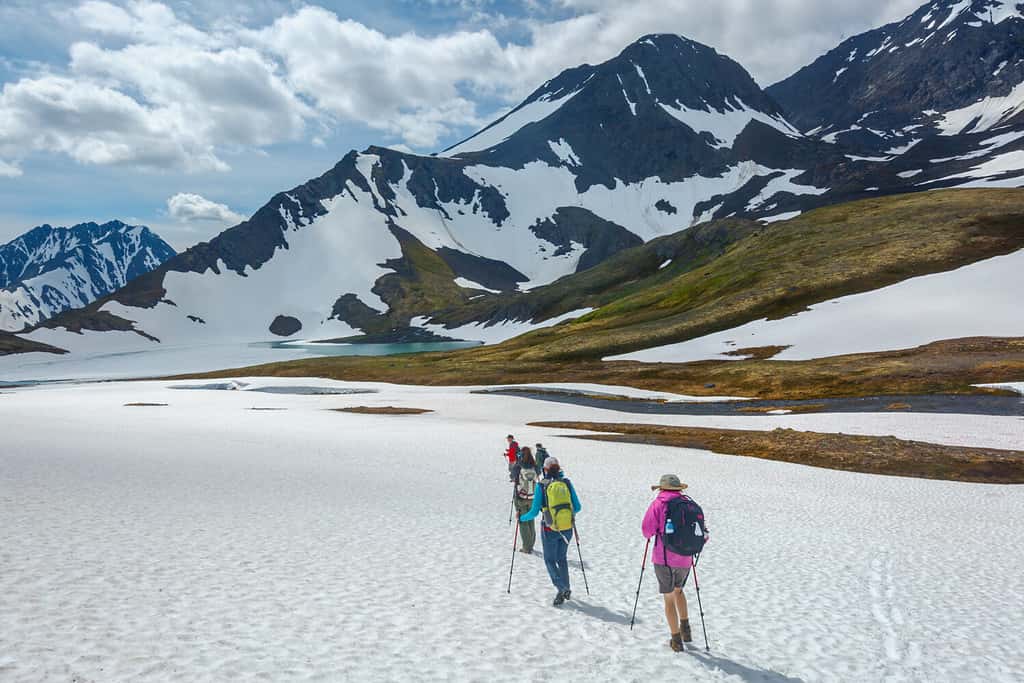
Crow Pass is breathtakingly beautiful. However, successfully traversing it can prove to be a challenge.
©Damon Shaw/Shutterstock.com
Like many other Alaskan mountains, Crow Pass is breathtakingly beautiful. However, successfully traversing it can prove to be a challenge. Hikers are advised to retreat early on the trail if they encounter numerous obstacles.
The rivers can be dangerously high sometimes, and crossing beyond specific points is risky.
10. Rover’s Run
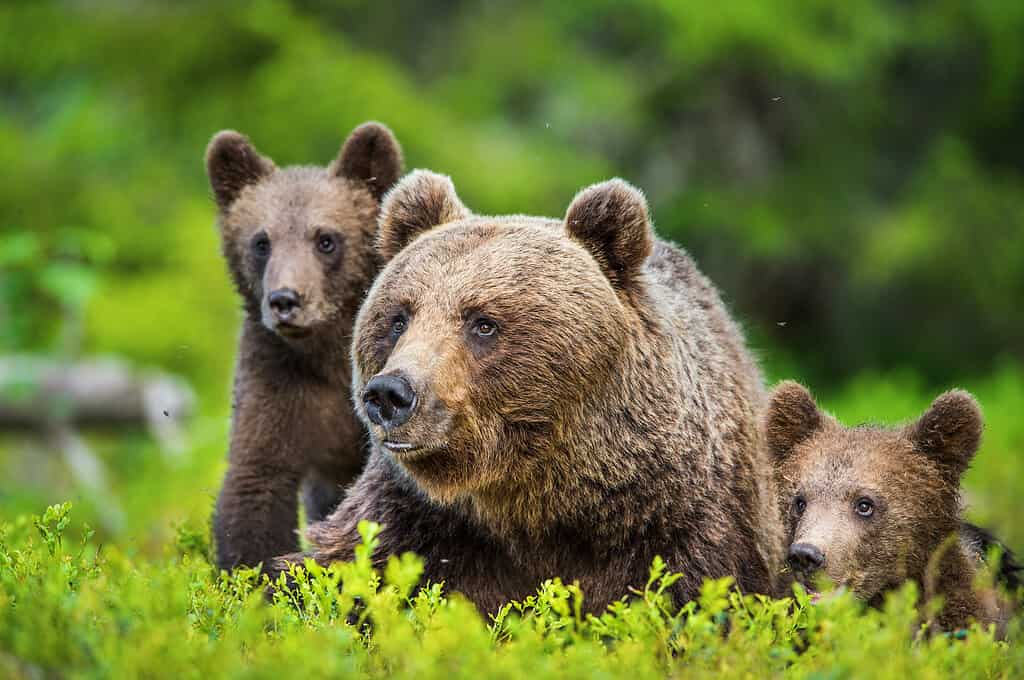
Although Rover’s Run presents no rugged terrain or extreme weather conditions, a local
brown bear
population congregates on the trail.
©iStock.com/USO
Although Rover’s Run presents no rugged terrain or extreme weather conditions, a local brown bear population congregates on the trail. Over the years, numerous incidents of bear maulings on the track have led authorities to divert certain sections away from the danger zones.
Additionally, the trail is known to occasionally host aggressive moose, adding to the danger of the hike.
The photo featured at the top of this post is © Bryan Neuswanger/Shutterstock.com
Thank you for reading! Have some feedback for us? Contact the AZ Animals editorial team.







